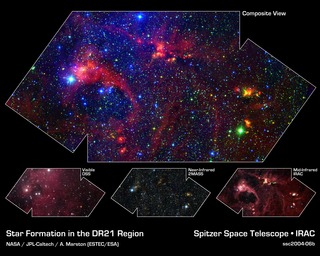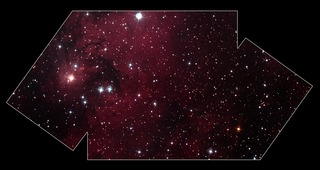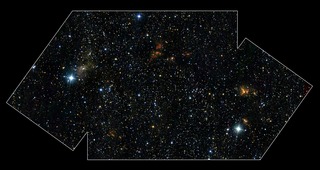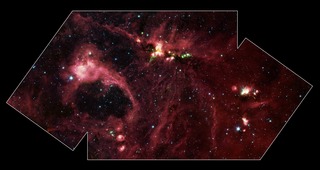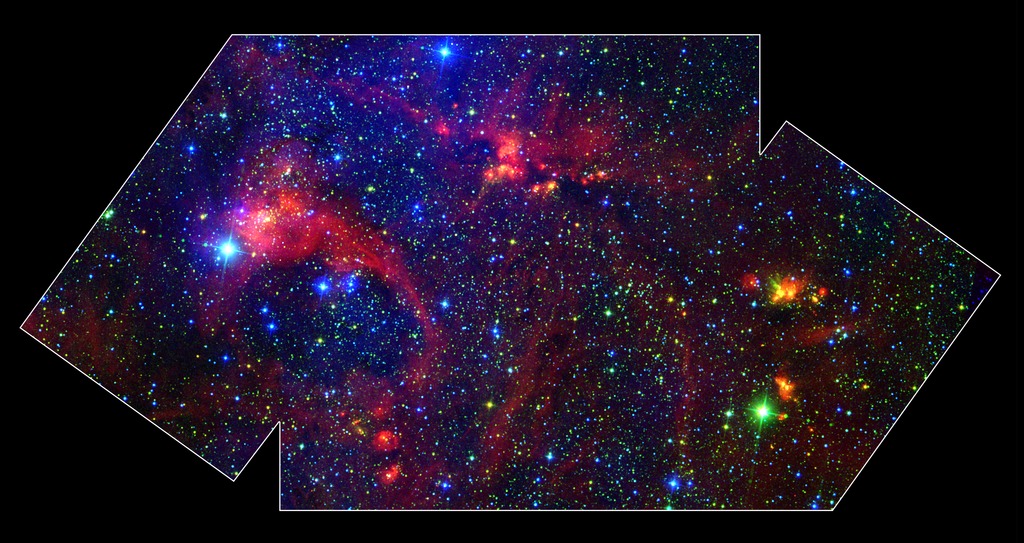
Credit: NASA/JPL-Caltech/A. Marston (ESTEC/ESA)
Observation • April 13th, 2004 • ssc2004-06b1
ssc2004-06b1
Hidden behind a shroud of dust in the constellation Cygnus is a stellar nursery called DR21, which is giving birth to some of the most massive stars in our galaxy. Visible light images reveal no trace of this interstellar cauldron because of heavy dust obscuration. In fact, visible light is attenuated in DR21 by a factor of more than 10,000,000,000, 000,000,000,000,000,000,000,000,000,000 (ten thousand trillion heptillion).
NASA's Spitzer Space Telescope allows us to peek behind the cosmic veil and pinpoint one of the most massive natal stars yet seen in our Milky Way galaxy. The never-before-seen star is 100,000 times as bright as the Sun. Also revealed for the first time is a powerful outflow of hot gas emanating from this star and bursting through a giant molecular cloud.
This colorful image is a large-scale composite mosaic assembled from data collected at a variety of different wavelengths. Views at visible wavelengths appear blue, near-infrared light is depicted as green, and mid-infrared data from the InfraRed Array Camera (IRAC) aboard NASA's Spitzer Space Telescope is portrayed as red. The result is a contrast between structures seen in visible light (blue) and those observed in the infrared (yellow and red). A quick glance shows that most of the action in this image is revealed to the unique eyes of Spitzer. The image covers an area about two times that of a full moon.
About the Object
- Name
- DR21
- Type
- Nebula > Type > Star Formation
- Nebula > Appearance > Dark
- Nebula > Type > Jet
- Star > Circumstellar Material > Outflow
- Distance
- 6,200 Light Years
Color Mapping
| Band | Wavelength | Telescope |
| Optical | 700 nm | DSS |
| Infrared | 2.2 µm | 2MASS |
| Infrared | 8.0 µm | Spitzer IRAC |
Astrometrics
- Position ()
- RA =20h 38m 22.2s
- Dec = 42° 4' 7.9"
- Field of View
- 1.0 x 0.5 degrees
- Orientation
- North is 101.0° right of vertical
